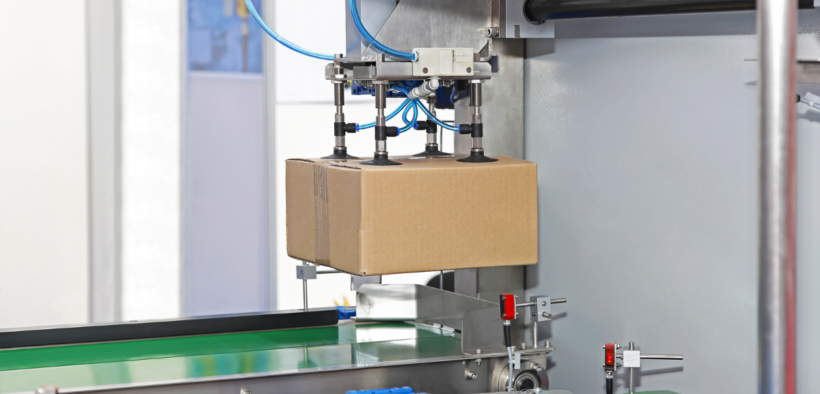COVID-19 accelerates uptake of automated solutions in logistics facilities
Share

A new report from business transformation consultancy TMX has found that COVID-19 is accelerating the adoption of automated solutions in logistics facilities, although price rises and long lead times are challenging businesses.
The new Pallet to parcel: COVID-19 and the need to automate report, co-written by senior TMX consultants Paul Stringleman and Nick de Klerk, draws on first-hand experience in the sector, which has revealed that as customer demand continues to grow, businesses are needing to strategise to keep up with increasing order volumes.
This has led to a rapid and urgent uptake in automated solutions.
However, COVID-19 has posed many challenges in the form of shipping delays, longer lead times, travel restrictions and price rises in the cost of materials associated with the deployment of automated solutions and infrastructure.
Nick De Klerk, Senior Consultant at TMX, warns that businesses who are not looking automate their warehouse operations now will be left behind.
“The time to automate is now,” Klerk stressed.
“Industry leaders are already looking to the next wave of technology to improve current processes in the short term and future proof their business in the medium term,” he said.
The report reveals first-hand industry observations from TMX, including the comparative cost increases of various warehouse operations technologies. For example, the cost of implementing manual operations has risen by up to 36 per cent. Systems reliant on Automated Mobile Robots (AMRs) saw price rises of 20 per cent, while goods to person systems saw rises of 15 per cent.
The research outlines that three interconnected factors are putting pressure on businesses to automate their material handling operations. These are: labour force pressures exacerbated by COVID-19 control protocols and worker shortages; demand for expertise in system commissioning, since this was shut out of Australia when borders closed; and the shortage of raw materials.
These supply pressures have occurred at a time of rapidly increasing delivery volumes as consumers stayed home and shopped online. Now, not only are consumers expecting prompt delivery but constantly available information on the status of their parcel and precise delivery times.
To respond and stay competitive, businesses are turning to automation to improve delivery accuracy and reliability while also reducing costs in operations and construction.
“The scale of this challenge and the need to respond is prompting a widespread acceleration in the adoption of logistics automation,” said Paul Stringleman, Senior Consultant at TMX.
“What we are witnessing at the moment is a radical change,” Stringleman said.
To assist businesses in navigating this dynamic landscape and avoiding unnecessary costs and fluctuations, such as those from high shipping costs and currency exchange, the Pallet to Parcel report proposes a client-centred approach to automation. Selecting the technologies appropriate for the task, combined with careful planning and experienced execution, has seen businesses reap the benefits of automation in operations and customer satisfaction without being hit by commodity-driven price rises and shipping delays.
As early adopters move further towards fully automated operations, and consumer demand shows no sign of slowing down, there is an increased urgency in the move towards automation, though dependent upon the right advice to ensure the technology meets the need of the business.
With more technology vendors entering the market for warehouse automation than ever before, it is critical to have a trusted partner with proven experience.
Travis Erridge, CEO at TMX, reveals that over the past two years, they have observed that the supply chain industry in Australia has had no choice but to rapidly scale up to meet demand through a combination of local upskilling and innovation.
“As the industry moves into the ‘new normal’ of sustained growth in e-commerce volumes, businesses will have to implement more permanent solutions that remain flexible to meet future fluctuation in customer needs,” Erridge said.
“We think automation will be an essential part of this solution,” he concluded.
Source: TMX















